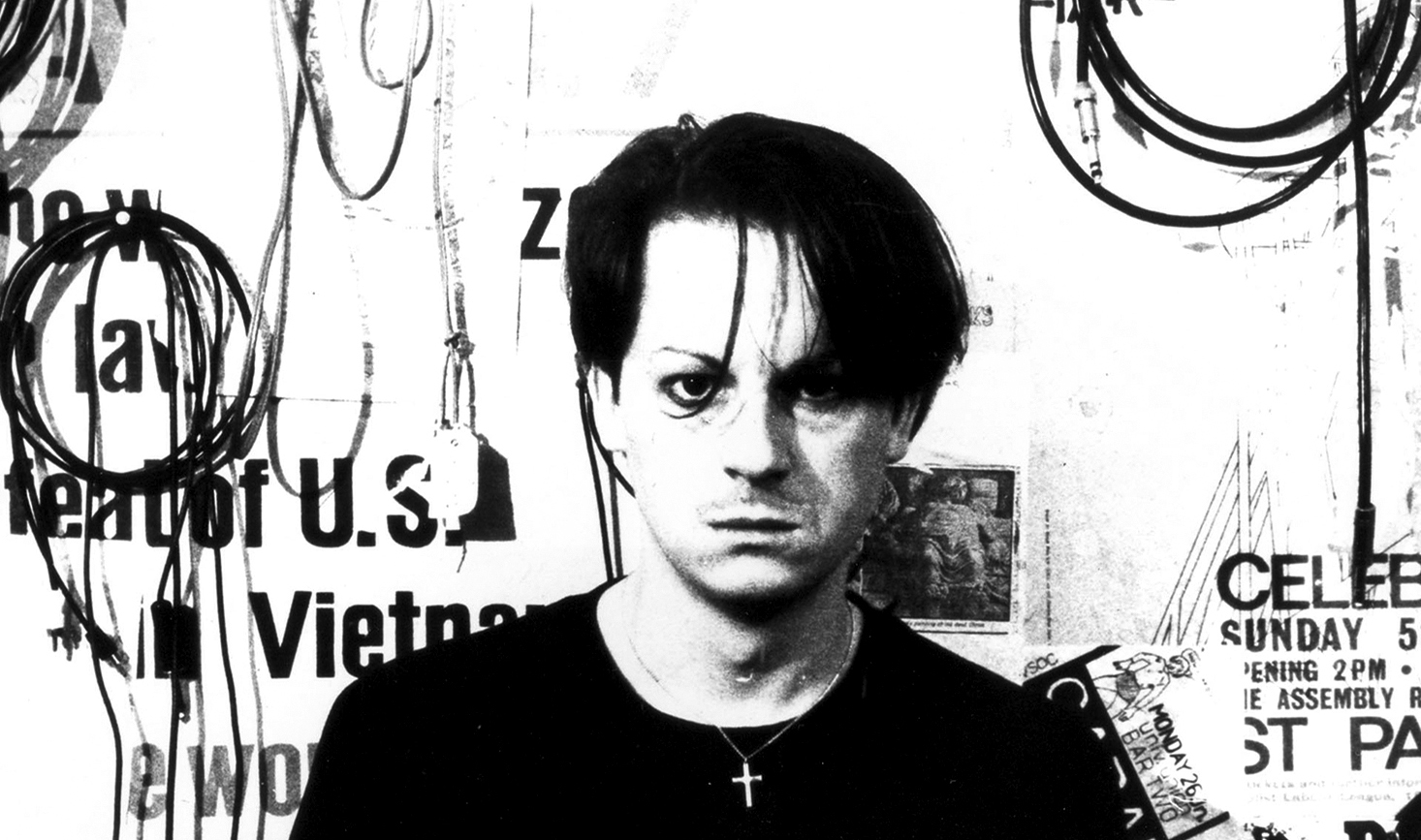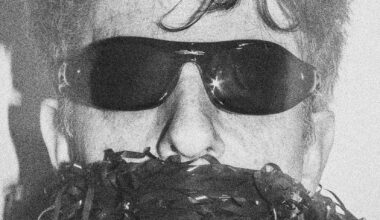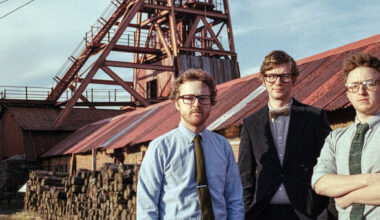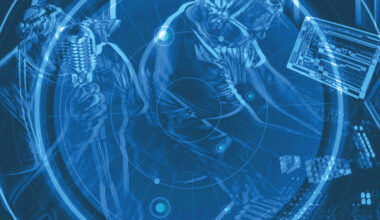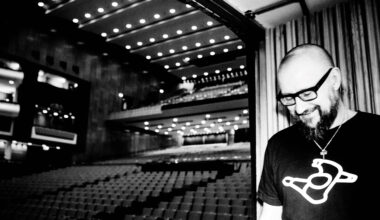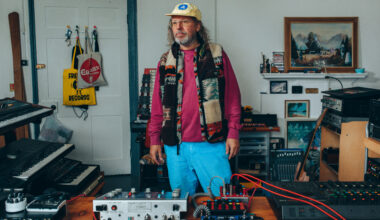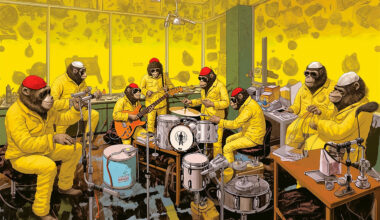Cabaret Voltaire’s Richard H Kirk serves up a raft of his solo work stretching back to 1974. Brace yourself for not one but two mind-boggling boxsets collections…
“There’s a myth that Cabaret Voltaire were trying to replicate the sound of factories,” says Richard H Kirk, speaking from his native Sheffield, a town where he has always lived. It’s a choice tinged with regret. “I lived in the East End of Sheffield and from where I was you could see right down into the valley, which was full of all these big fucking black buildings churning out Christ knows what. You could hear the stuff going on at night, but there was never any notion in Cabaret Voltaire of trying to make the noise of the factory. Why would you want to do that? You want to move away from that, escape into some alternative reality.”
There’s a lot of romanticised talk about a Sheffield scene, with the likes of Vice Versa, Clock DVA and The Human League all arising from the city, all producing moody, angled, electronic music with a kinship to Cabaret Voltaire. But Kirk says the group took their inspiration from regions way beyond the north of England, from the American subcurrent represented by William Burroughs, to Europe, where Kirk and his soon to be Cabs co-founder Chris Watson first met. It was while the pair were exploring Europe that the idea of Cabaret Voltaire, whose name is taken from the Zurich café where the Dada movement was founded in 1916, first hatched.
“I’ve always felt more European, which is why I’m so sad we’re leaving the EU,” explains Kirk.
“You go to Paris when you’re 18, there’s a grandeur about the place, those wide open streets that you don’t get in Sheffield. There’s a romance of travelling around, drinking cheap wine, never knowing where you’re going to end up.”
Indeed, the famous image of the scowling Kirk that fronted the original release of ‘Earlier/Later’, the 2004 collection of unreleased solo work that spanned 1974-89, was taken not in some Sheffield precinct photo booth but in Livorno, Italy, when Kirk was flitting around the continent.
“It was taken when I’d been sleeping rough,” he laughs. “I thought it was a weird, feral looking version of me when I was young. I was a bit of an angry young man. I’m more mellow at 60, but not that mellow.”
‘Earlier/Later’ is currently enjoying a reissue as part of ‘Richard H Kirk – #7489 (Collected Works 1974-1989)’ an eight-CD boxset of his solo work that also includes ‘Disposable Half-Truths’, first released on cassette in 1980, 1983’s ‘Time High Fiction’, the 1986 double-bill of ‘Black Jesus Voice’ and ‘Ugly Spirit’ as well as ‘Super Duper Soul’, a brand-new collection of previously unreleased archive material recorded between 1982 and 1988. If that wasn’t enough there’s also ‘Sandoz – #9294 (Collected Works 1992-1994)’ a five-CD set featuring the very different works he released under the Sandoz pseudonym in the early 1990s.
“What I did outside of Cabaret Voltaire stayed outside,” he says. “Occasionally, the solo stuff worked as blueprints, but it was very much my own private trajectory. Also, I found it a bit frustrating in our post-Rough Trade period when we started working with bigger labels. We’d make two, three albums a year with Rough Trade, when that stopped I spent a lot of my studio time working on my own stuff.”
The material does, however, follow a similar course to Cabaret Voltaire. Unsurprising as Kirk was responsible for laying down the scratchy, spectral bed of sound upon which the group’s work was built. There are early gems such as 1974’s ‘Cosmic Override 1’, whose windscreen synthwipe sounds like it could precede a 21st century Warp release, while 1975’s ‘Radio Silence’ is a primitive fragment of prototype dark ambient and ‘Trabantenstadt’ brings a harsh, Teutonic scrunch suggestive of a sonic postcard from Europe.
One of the key structural differences between Kirk’s early material and Cabaret Voltaire was their rejection of the verse/chorus song structure in favour of a sound that sustains or builds in intensity. Krautrock was certainly an influence in the dark days of the 1970s on the other side of pop.
“Using the same instruments as rock ’n’ roll, but coming up with a different end product that was distinctly Germanic was very important,” agrees Kirk. “But that was problematic in the 70s. It wasn’t so long since the Second World War and you can imagine the horror of your parents, they’d bombed the fuck out of Sheffield and now you’re listening to these Germans.”
Also important were Roxy Music, Brian Eno in particular. Eno, you could say, was Cabaret Voltaire’s Johnny Rotten; the man in the public eye who convinced them that ideas were more important than musical aptitude.
“Hearing Brian Eno going on about being a non-musician was inspiring to us,” says Kirk. “It made us think, ‘Well if this guy can be in a band, so can we’. It was like punk, it gave us the impetus to think we could do something. He also mentioned some of the German bands in interviews, which was our introduction to them.”
It was only from 1975 onwards that the Cabs were able to road test their rough-hewn sketches, armed with rudimentary, non-traditional equipment. By now Stephen Mallinder had been brought in to provide vocals and bass, lending some forward impetus. “He was a bit more well spoken,” says Kirk. “We didn’t want to be tied down by someone with a broad northern accent, which would take some of the ambiguity away.”
This was in the pre-punk era and it’s fair to say those early audiences were utterly confounded.
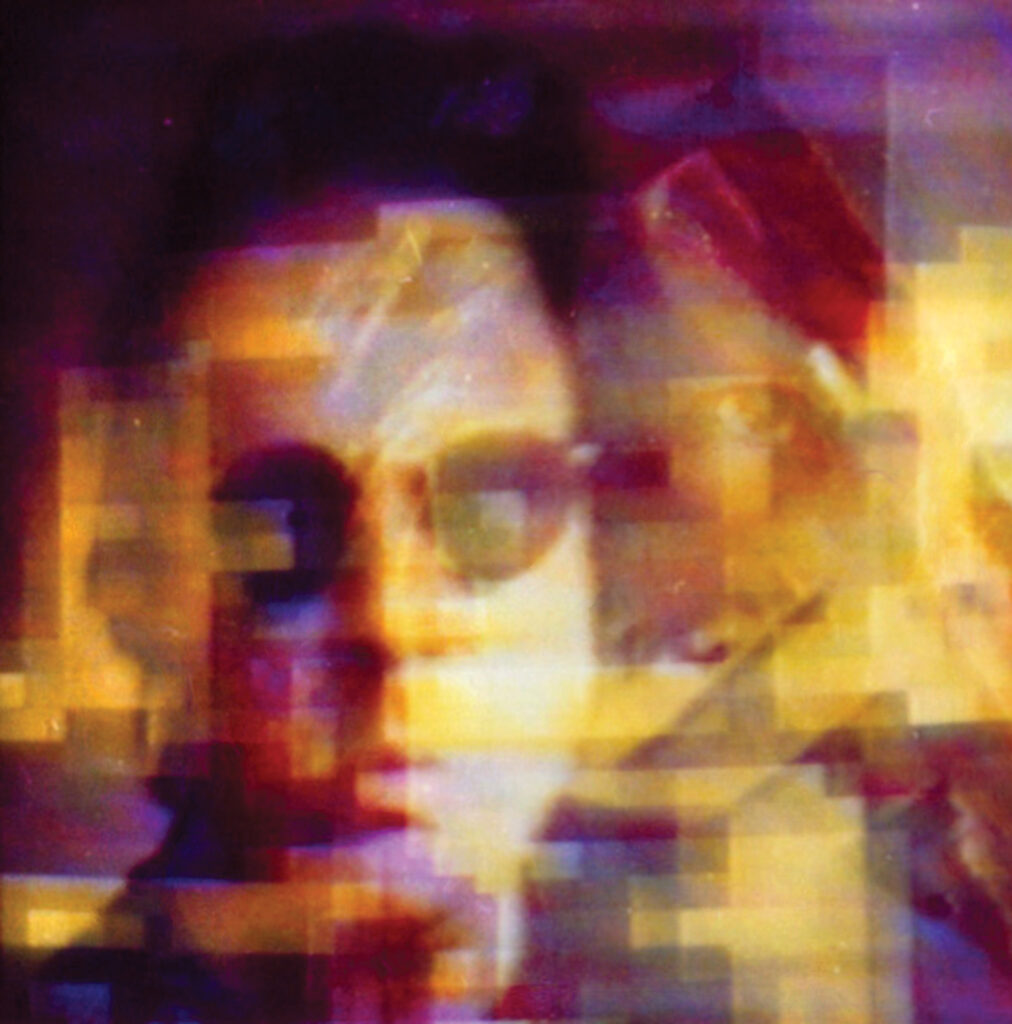
“We got the opportunity to do a show in 1975,” he says. “Chris knew someone at his work who was putting on this concert called Science For The People. We lied and said we could play rock music, we got that gig under false pretences and it ended in a riot. It was at that point we knew were onto something. Then in 1976 we did a performance at a school in Bury. It lasted four minutes. We were playing to a load of school kids in the assembly. It was 9.30am and we were blind drunk. Someone set off the fire alarm, then they pulled the power.
I’ve a recording of it somewhere. We did another at a lecture theatre in Sheffield that year as part of the Experimental Music Society. A guy there called Dr David Cox allowed us to use the facilities, which included a Revox tape recorder and a VCS 3 synthesiser so we made a few recordings there.
“It wasn’t until punk that we got out and did more live things, but even that was problematic because punks wanted punk. It wasn’t until post-punk that people were prepared to embrace what we did and audiences were more receptive because punk did become very boring very quickly!”
By the time punk had given way to the more expansive terrain of post-punk, Cabaret Voltaire were in place, their music taking shape as their arsenal of equipment grew.
“Chris ordered some components from an electronic magazine and built a modular synth called a Dewtron. He’d be up all night soldering components. Then he bought an EMS, which was £500, a hell of a lot of money, but they were used by Pink Floyd and Roxy Music. The thing about these synths was you could easily process sounds with them, through the filter and ring modulator. We hated the notion of presets, the sort of thing you heard everywhere on cheesy records. We put all sorts through it, we’d sing, play guitar and clarinet…”
Most of the key determinants of the Cabaret Voltaire sound were in place, including the initially oblique but detectable influence of funk and disco.
“James Brown, The Fatback Band, Hamilton Bohannon, they were very important to us at the time,” says Kirk. “But we weren’t good enough musicians to make that sort of sound, so we did something within our limitations and in the process, by accident, created something new.”
‘Disposable Half-Truths’ showcases Kirk’s own progress during this period; on ‘Information Therapy’, for instance, with its spitting, looped percussive riff and scalding, white-hot layers of processed vocals and keyboard drones. By now, Cabaret Voltaire were ensconced at their Western Works studio, whose nearby pub was a social vortex for young, floppy-haired aspirants in Sheffield’s avant/electropop scene. Such was the nature of Cabaret Voltaire that their studio is part of their legend: further proof that they weren’t merely realists, responding to their environment, but creating their own environments that were hypothetical, scary and futuristic. An inkling of the frightening state of geopolitics in the late 70s and early 80s lent their music a further coating of anxiety sweat.
“There was definitely an anti-establishment vibe to us,” says Kirk. “When you make a record called ‘Do The Mussolini (Headkick)’ you have to have your tongue in your cheek. That’s what’s so sad about now. The complete absence in new music of that counter-cultural dimension which we took for granted, that politicised edge. It seems now it’s all about entertainment.”
The Cabs took a further shift in the early 80s when Watson left to take up a role as a sound researcher for which he is renowned to this day. Meanwhile the music scene shifted from bleak monochrome to colour, as a galvanised funk and rap scene emanating from New York rained its influence on the post-Joy Division indiescape.
“A lot of that came from Kraftwerk,” says Kirk. “The black guys had been playing Kraftwerk at these block parties and then ‘Planet Rock’ uses the melody of ‘Trans-Europe Express’. It was the passing of the baton between Europe and black America coming full circle.”
Kirk’s music and that of the Cabs also changed. It became compact, funkier, though heavily inflected with leftfield elements to disconcert the hedonistic. ‘This Is The H-Bomb Sound’, from Kirk’s ‘Black Jesus Voice’ and ‘Hipnotic’ from ‘Super Duper Soul’ both sound like a weird Cubist take on the sort of electro-funk coming through on 12-inch imports in the early 80s, everyone from Man Parrish to D Train.
“Part of it was technology,” he says, “sequencers meant you could have flawless timing, but by the early 80s you’re getting all of this electro from New York and it was less about albums, more about 12-inches. It seemed to be the logical direction to go, making people dance, but still have the cut-up political thing in there as well.”
By the late 80s, Mallinder and Kirk had drifted apart. It wasn’t until the post-rave early 90s when Sheffield rose again with the Warp label whose open-ended reconstruction of electronic dance music echoed Cabaret Voltaire’s own.
“That was the period that really got me interested again,” he agrees. “The whole club thing had become very stale and then the music coming from Detroit, Chicago, New York was very much influenced by Kraftwerk again. It was like dance music had been rebuilt. What also appealed to me was that you had no idea who was making these records. That’s when I started Sandoz. I was like, ‘I can do this, and I’m not going to be judged against 20 years of my back catalogue, because no one knows who Sandoz is’. That whole scene wasn’t about dance music, it was like Cabaret Voltaire, it was people doing something slightly wrong and in the process inventing something new.”
Kirk himself was energised to reactivate. ‘Digital Lifeforms’ (1993), and its title track in particular were a far cry from the bleak abrasions of his early work. This was a state-of-the-art electro model subtly inflected by his interests in world music, in particular Latin and African, which Kirk had cultivated since the 70s.
“The guy I knew most about was Fela Kuti,” he offers. “Some of his records are quite electronic. I think he’d been classically trained and he talked about mixing avant garde European music with African rhythm. There’s been a lot of music since discovered from back in that period that never made it out of Africa at the time which is only now seeing the light of day. Nigerian psychedelia, stuff from Ethiopia that I wish I’d heard back then.”
On ‘Sandoz Runs The Voodoo Down’, an album of previously unreleased material, the epic ‘Biosynthetic’ speaks of a new, sleek, intricate, mobile electronica, capable of subsuming myriad and wide-ranging points of reference. Never did The Cabs resort to being copycats, never did they merely allow themselves to be subsumed by their undoubted influences. There was always a distance, a filtering process in the way in which they derived from their sources, which accounts for the enduring uniqueness of Kirk’s legacy.
“Well yeah, it’s like ‘The Man-Machine’ by Kraftwerk,” agrees Kirk about the group he cites frequently, a group whose music sounds nothing like his own. “It’s too good to be copied. It’s best to leave it to the masters.”
‘Richard H Kirk – #7489 (Collected Works 1974-1989)’ and ‘Sandoz – #9294 (Collected Works 1992-1994)’ are out on Mute
